‘I thought I’d just picked out the typical things – I still think I have in a way because they’re the ones that make sense to me.’ Anthea Hamilton is telling me about her new installation at the Hepworth Wakefield, in which she has redisplayed objects from Kettle’s Yard, the former Cambridge home of the late English art collector Jim Ede. Currently closed for a major renovation project, Kettle’s Yard is loaning works from its collection to a variety of regional galleries; earlier this year a selection was displayed at the Hepworth and it is from this that Hamilton has created her additional ‘reimagining’. The installation also features imaginative new works made by Hamilton in response to the house and its collection, alongside contributions from invited collaborators.
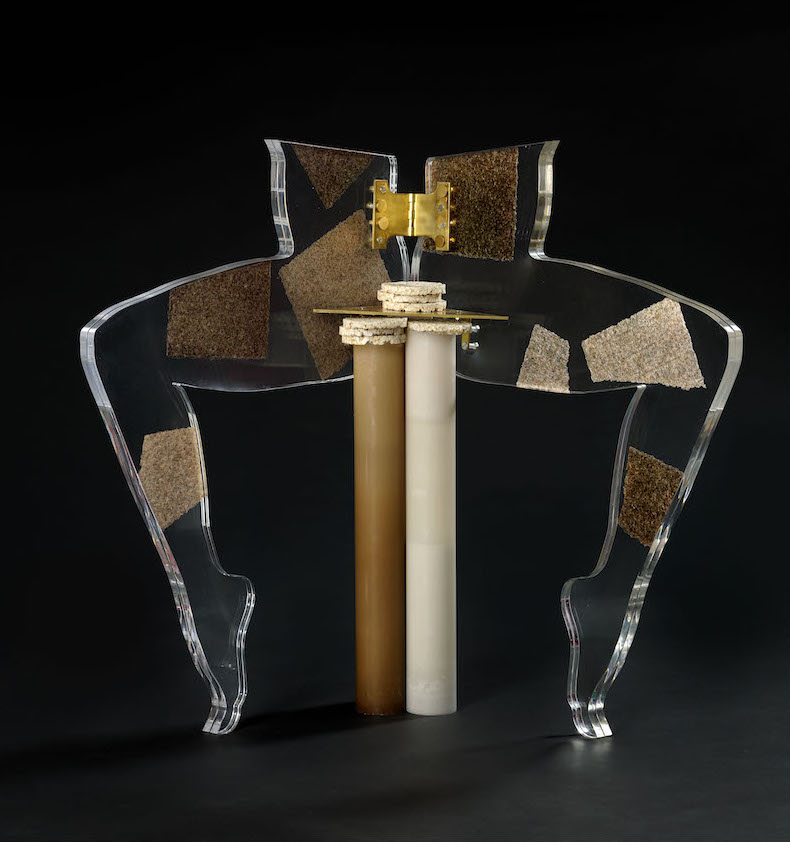
Leg Chair (SUSHI NORI), 2012, Anthea Hamilton. Photo: Doug Atfield; courtesy the Artist and Firstsite
In some ways, it’s an odd pairing. Hamilton, who is nominated for this year’s Turner Prize, creates installations full of unexpected images and objects: blown-up photographs of John Travolta’s face, Perspex cut-outs of women’s legs, a giant golden bum clasped by two hands, kimonos, rice crackers, pineapples. Such vibrancy, fuelled by Hamilton’s Pop aesthetic, seems far removed from the pared-back spaces and muted colours of genteel Kettle’s Yard – with its focus on British modernism. Yet Hamilton’s knack for producing surprising and often strange associations makes her an ideal choice to fiddle with a normally static display. ‘It’s exciting to see what happens when the collection leaves that [Kettle’s Yard] context, which is so fixed and precise. We all felt that Anthea would have the right level of disruption and irreverence,’ says Andrew Bonacina, chief curator at the Hepworth.
Hamilton’s disruption has, in fact, produced something subtle and sensitive to the very unique character of Kettle’s Yard itself. ‘Kettle’s Yard is quite impermeable in a way – it welcomes you in but overwhelms you with its wealth of beautiful objects [which are] all held together through personal relationships or formal relationships or materials or narratives. I tried to bring out what my understanding of what the house was – as a place of light, space, of the spaces between objects’, she says. What did she take from the house? ‘It’s not about how to accurately remember the space but to recreate the sensation of being in that space.’
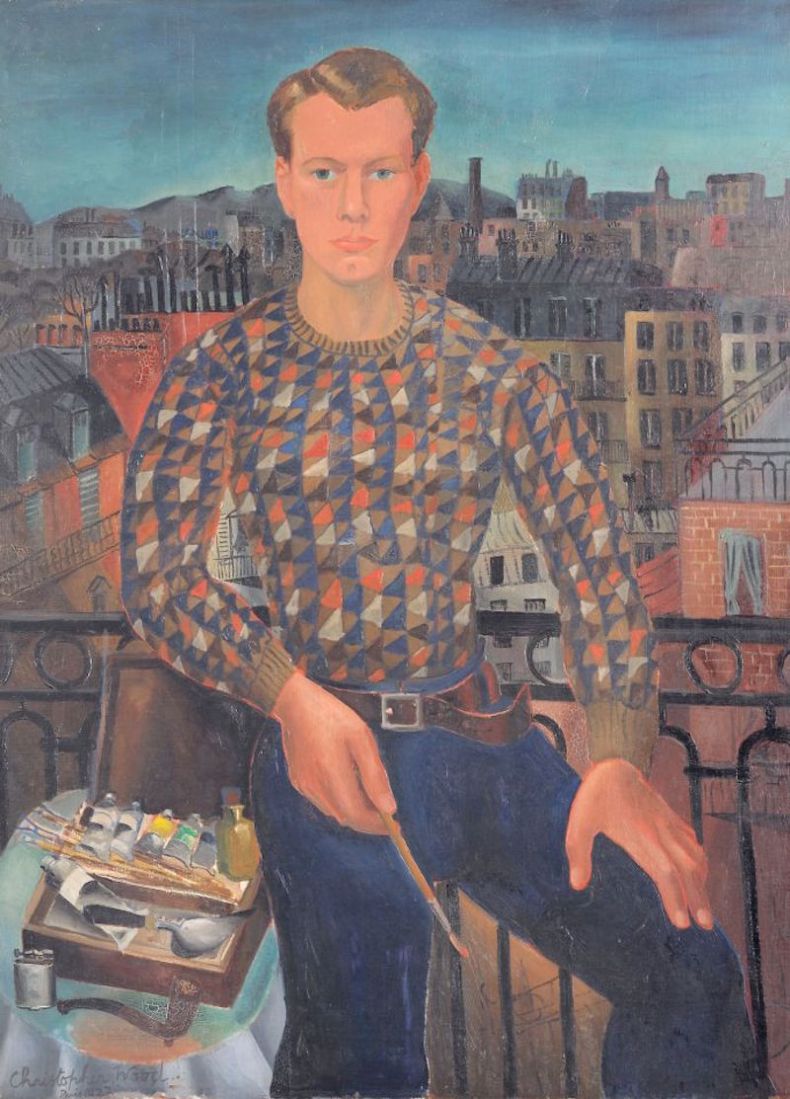
Self-Portrait, 1927, Christopher Wood. Kettle’s Yard, Cambridge
While Hamilton might think she has picked out the ‘typical things’, the curators instead stress her skill at choosing, or drawing inspiration from, objects that others might easily overlook. The geometric patterned jumper that Christopher Wood wears in his 1927 Self-Portrait appears in a new kimono work by Hamilton, its colours and design perfectly replicated. The other kimono on show is covered in a beautiful printed image of British grasses, drawn from a photograph Hamilton found in a book on flora and fauna by Roger Phillips. Seventy-six pebbles normally arranged in a spiral on a table have been concocted into a mobile that delicately dangles from the Hepworth’s ceilings. As if to demonstrate Hamilton’s singular eye, Jenny Powell, senior curator at Kettle’s Yard, directs me to a small abstract gouache by LA artist Kenneth Price, which, she tells me, is not normally on display in Cambridge; this seems to affirm Hamilton’s comment that ‘everyone makes their own journey through the collection.’
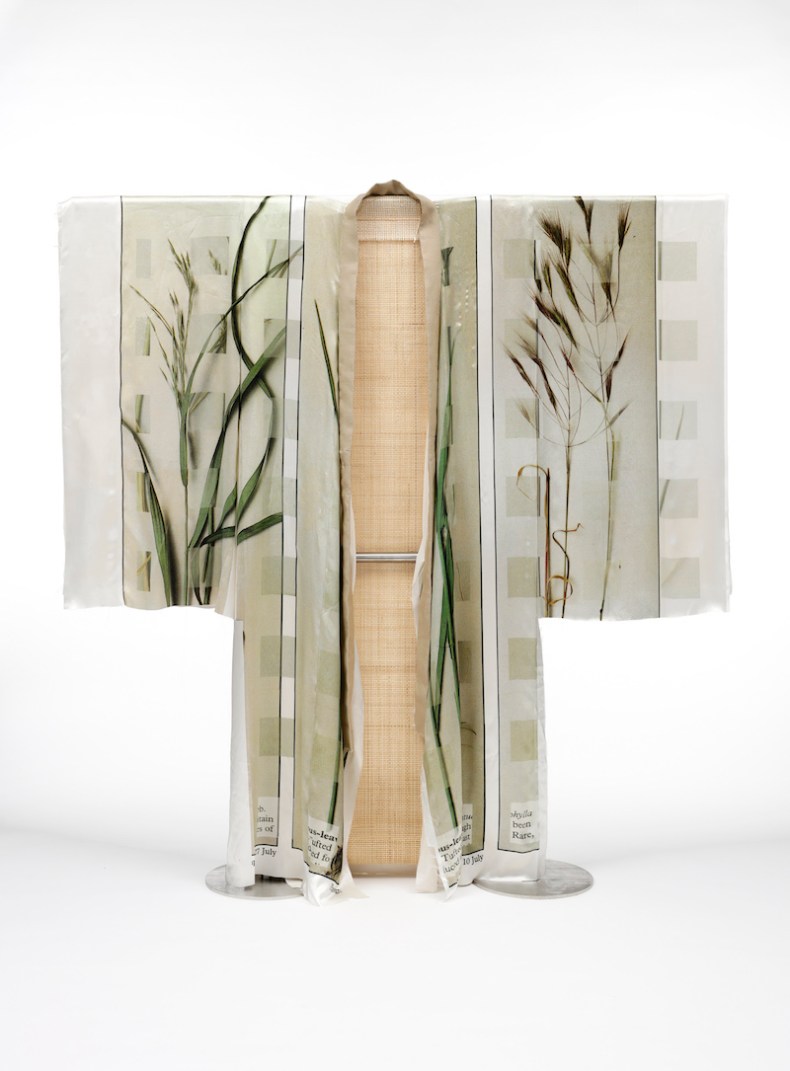
British Grasses Kimono, 2015, Anthea Hamilton. Photo: Lewis Ronald; courtesy the artist and Loewe Foundation
I venture that her work frequently alludes to Surrealism in the way it plays with domestic objects: Hamilton’s bright red, globular Vulcano Table (2014) on display here seems to me a perfect example. ‘Each named artistic movement – Surrealism, Dada, Pop – provides a vernacular for when you try to look at your surroundings in a different way…Surrealism is too strong a term.’ Maybe I mean more the idea of making strange? ‘I don’t find I do things to make them strange, more that there’s an absolute rightness to them, I’m re-presenting that’.
Elsewhere, Henri Gaudier-Brzeska’s graceful Dancer (1913) seems to literally dance its way down a spiral staircase, which echoes a wooden staircase in Kettle’s Yard; placed at the bottom is a glass carboy by David Peace which is usually positioned under the stairs in Kettle’s Yard. Ede’s own precise arrangement of art and objects has, in fact, informed many of Hamilton’s choices; his book A Way of Life (1984) serves as a written and visual guided tour of the house and captures something of the sensation Ede himself was trying to create. Hamilton gestures to Ede’s interest in natural or found objects, to his curiosity and non-hierarchical approach to collecting: ‘…you can take a stone on the beach and place it next to something that’s an heirloom. You see that in Ede’s house all the time. It makes you understand things differently.’ The green woven mats on the floor and on the wall of Hamilton’s display – ‘alternative plinths’ in her words – force you to think about the space, but they also nod to the unique way that Ede’s collection combines natural objects and works of art.
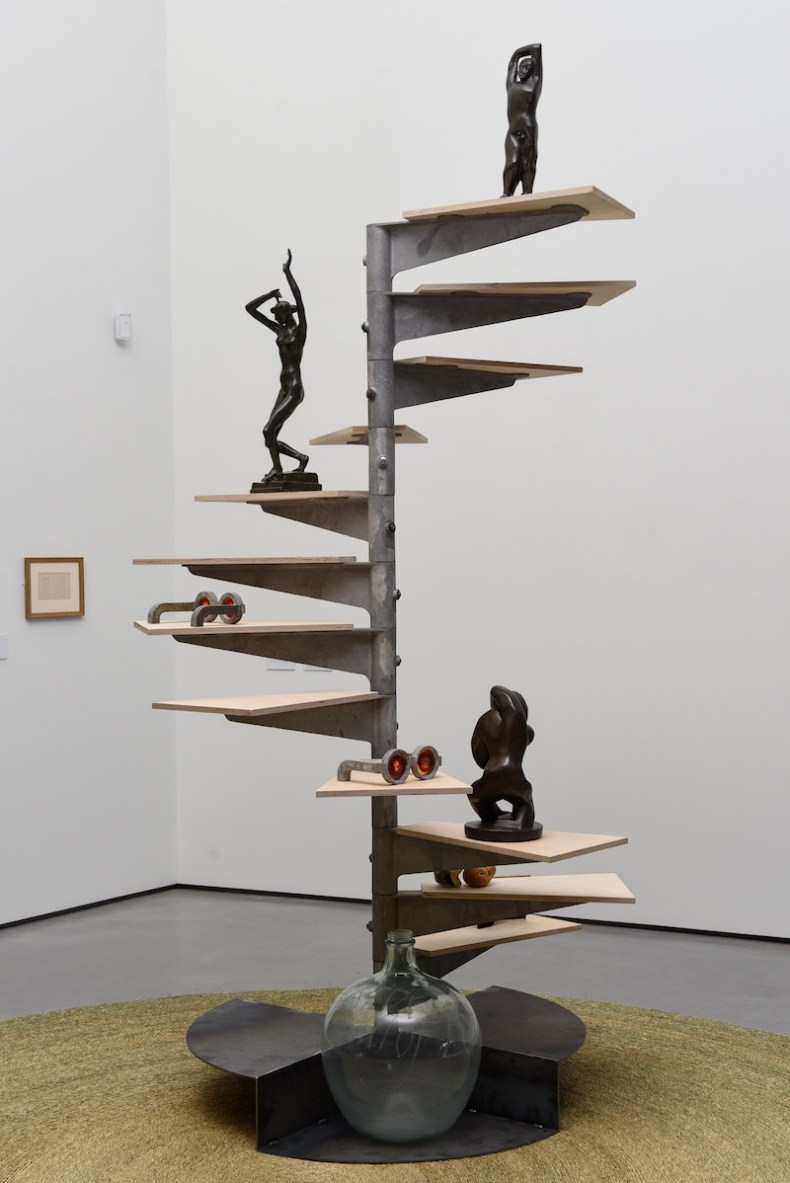
Spiral stair case, 2016, Anthea Hamilton, installation view, ‘Anthea Hamilton Reimagines Kettle’s Yard’ at the Hepworth Wakefield. Photo: © Darren O’Brien/Guzelian; courtesy the Hepworth Wakefield
The collaborative aspect of Hamilton’s project is also inspired by Ede, whose collection, assembled over 50 years, emerged out of the close relationships he built with artists. Among Hamilton’s invited artists – which include Daniel Sinsel, Maria Loboda, Laetitia Badaut Haussmann, and Ella Kruglyanskaya – is Hamilton’s partner, Nicholas Byrne, whose Love Pillow sculpture was inspired by the wood objects found in Kettle’s Yard: he used the invite to get to know a material better (something Hamilton also admits, telling me that George Kennethson’s Forms encouraged her to experiment with alabaster and expand her knowledge of natural materials). Badaut Haussmann’s sculptural Day Bed works as a receptacle for both Kennethson’s rounded sculpture and Gaudier-Brzeska’s little-shown Ornamental Mask (1912), creating narratives across both space and time. ‘These are all artists whose work I really admire – I know them as friends but this project was a way to draw them in closer and get to know them better.’
The theatricality of Hamilton’s installations – she has described her works as ‘performative sculptures’ in the past – is made clear through the choreographed nature of this display and the deft associations she has made. Did such a project appeal given this associative approach to art making? ‘Again, maybe it’s just how I understand how things should be. I’ve never been keen on the white cube aesthetic – it’s such mannered seriousness and I’m resistant to the idea that you can’t go back in and change things.’ It’s a way of working that is embedded, but, she tells me, this project afforded an opportunity to reflect on her practice: ‘It made me really think about what I do and why I do it…It’s like having a stretch – you notice where you’re flexible and where you’re not.’
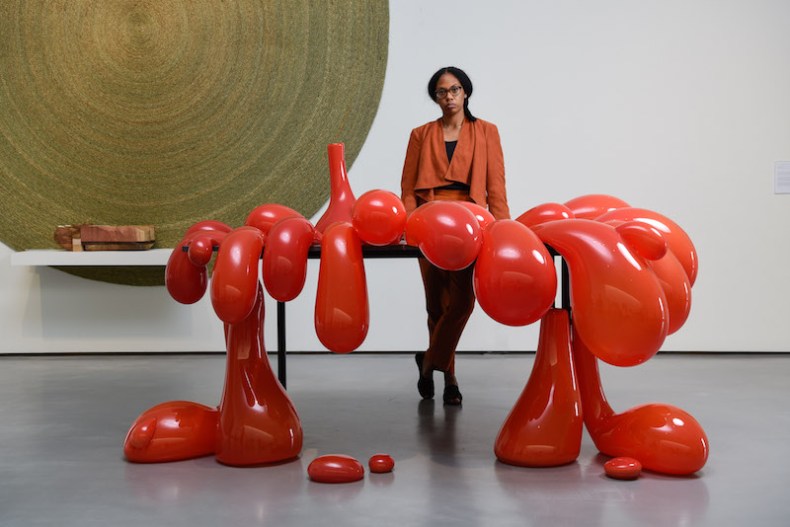
Artist Anthea Hamilton poses in front of her work Vulcano Table, 2014, installation view, ‘Anthea Hamilton Reimagines Kettle’s Yard’ at the Hepworth Wakefield. Photo: © Darren O’Brien/Guzelian; courtesy the Hepworth Wakefield
Others have also noticed what she’s doing. How does she feel about being nominated for this year’s Turner Prize (for her 2015/16 exhibition ‘Lichen! Libido! Chastity!’ at the SculptureCenter, Long Island)? ‘It must mean something different to everybody…whatever degree they are participating in it. The Turner Prize, in this way, is a bit like the British Art Show, it’s a slice of time – we’ll look back and be able to see what was relevant, what was interesting, and how ideas have shifted around.’ I go further: this exhibition at the Hepworth Wakefield is based on the collection at Kettle’s Yard, which is full of key works by British artists, and she’s in the running for a prize that celebrates contemporary British art. Does she feel part of a legacy? ‘That’s a strange question! The genesis of my ideas for a show at the SculptureCenter, New York, which then went on to be developed into the Turner prize presentation, overlapped with research for this show, so even though they appear very different there is a shared set of ideas. In terms of a legacy, I don’t know if I should answer that!’
‘Anthea Hamilton Reimagines Kettle’s Yard’ is at the Hepworth Wakefield until 19 March 2017.
Unlimited access from just $16 every 3 months
Subscribe to get unlimited and exclusive access to the top art stories, interviews and exhibition reviews.

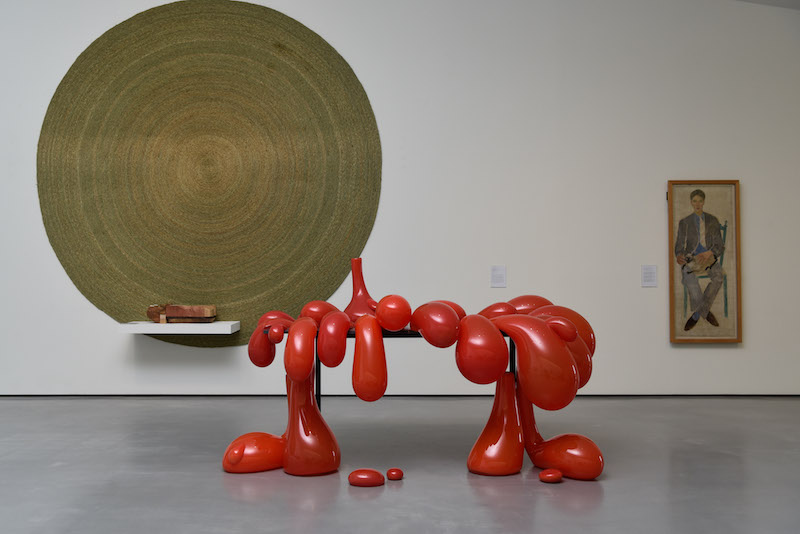
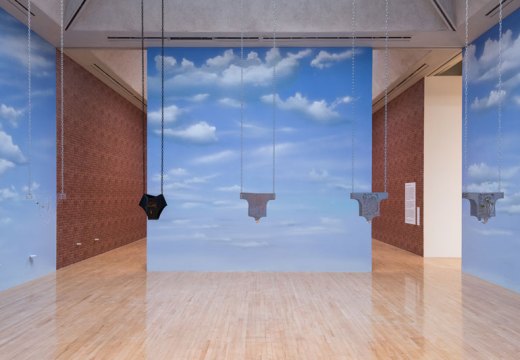
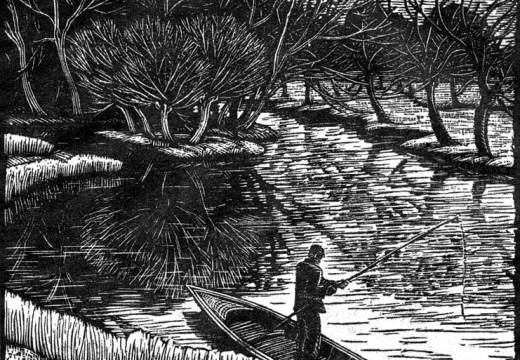
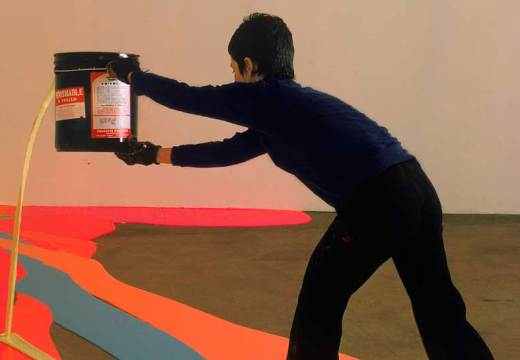









![Masterpiece [Re]discovery 2022. Photo: Ben Fisher Photography, courtesy of Masterpiece London](http://www.apollo-magazine.com/wp-content/uploads/2022/07/MPL2022_4263.jpg)
Why are fathers so absent from art history?